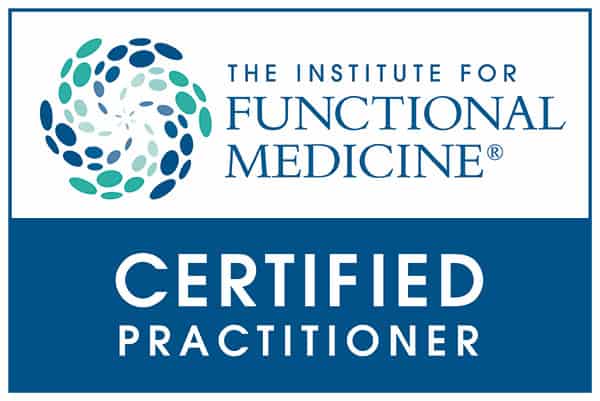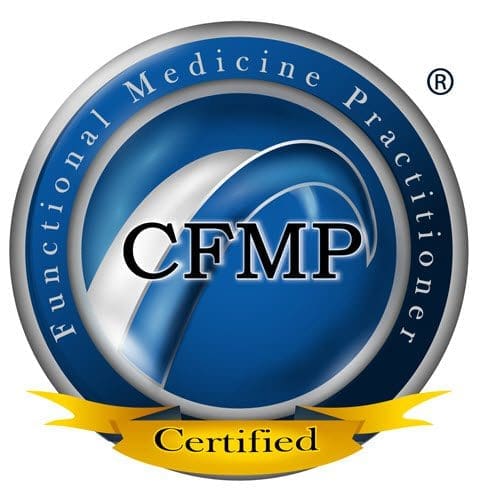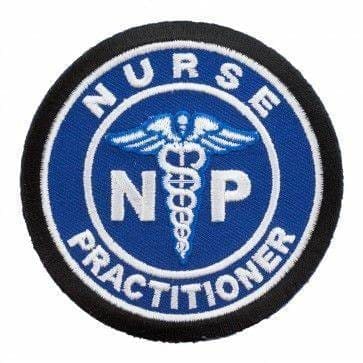
by Dr Alex Jimenez DC, APRN, FNP-BC, CFMP, IFMCP | Fitness, Health, Wellness
If you like to run but don�t looove to run, here�s some news that�s sure to put a bounce in your step. A recent review of studies found that to score the major health perks of running, you don�t have to pound the pavement for long: Jogging just five or six miles a week is enough.
The researchers report that people who logged that many miles over the course of one or two runs (and less than 51 cumulative minutes) per week had a lower risk of certain cancers, stroke, osteoarthritis, high blood pressure, and high cholesterol compared to people who jogged less or not at all.
It gets even better: When the reviewers looked at the effect of running on cardiovascular mortality and death from any cause, they found that the low-mileage group had the same reduction in risk as people who laced up more often and covered more ground every week.
RELATED: 15 Running Tips You Need to Know
�Maximal health benefits of running appear to occur at quite low doses, well below those suggested by the US physical activity guidelines,� the researchers write in the study, which was published in the journal Mayo Clinic Proceedings. (The government recommends 75 minutes of vigorous activity per week.)
But of course, if you�re running to lose weight, the same logic still applies: More steps means more calories burned. You may want to stick to your usual schedule and route. But for anyone who�s been pushing herself on long-distance jaunts in pursuit of optimal health, the new findings may offer some sweet relief.
So�what is a good goal to shoot for, according to science?
Carl J. Lavie, MD, the review�s lead author and the medical director of cardiac rehabilitation and prevention at the Ochsner Medical Center in New Orleans, offered this�advice to�the New York Times: �Running for 20 to 30 minutes, or about a mile-and-a-half to three miles, twice per week would appear to be perfect.�

by Dr Alex Jimenez DC, APRN, FNP-BC, CFMP, IFMCP | Fitness, Health, Wellness
Let’s face it: whether you’re an experienced exerciser or totally new to working out, very few of us have the time to dedicate hours upon hours to our sweat sessions. That’s why it’s important to make every minute count. These proven tips and techniques will turn up your calorie burn during every workout you do, helping you bust through fitness plateaus and melt fat away in less time.
Pump up the jams
Pop in your earbuds, cue up your favorite playlist and get cranking. Listening to music is one of the easiest�and most fun�ways to rev up your calorie burn. When a team of University of Wisconsin researchers asked men and women to perform two 8-minute exercise sessions on a stationary bike, one with music and one in silence, the exercisers increased their average heart rate by 10 beats per minute, worked harder, and burned 7% more calories when they pedaled to tunes.
Pair up with an inspirational partner
Exercising with someone just a little better than you can bring out your calorie-scorching best. In one study, researchers from Kansas State University found that people who exercised with a partner they thought was a little fitter and stronger than they were increased their workout time and intensity by as much as 200%.
Let go of the rails
The more muscles you use, the more calories you burn. That means letting go of the rails on the treadmill and not leaning on the elliptical so your lower body and supporting core muscles have to work harder to keep you upright and in motion.
Put your arms into it
Race-walkers have an adage: As your arms go, your legs follow. If you want to speed up your pace and turn up your burn, pump your arms faster and your feet will follow. You�ll also engage more upper body muscles for another calorie burning bonus. Ditto for your elliptical machine sessions. Research shows that exercisers use more fat-burning oxygen when they get their arms into the action by using the elliptical machines handles than when they churn along with their legs alone.
Find your sweet spot
High intensity interval training (HIIT) may be great for getting a big metabolic bump for your exercise time, but because it’s so hard, many people burn out and don�t do it enough to see results. For a better, consistently higher, calorie burn, you want to hit your �sweet spot,� says Daniel Frankl, PhD, kinesiology professor at California State University, Los Angeles. �That�s the highest submaximal exercise intensity you can tolerate for 30 minutes.� You know you�re there when your breathing is slightly labored, but you can still talk in short sentences.
Wear some weights
Heavier people burn more calories because their bodies have to work harder to keep them in motion. You obviously don�t want to gain weight to burn calories, but you can fake it by wearing a weighted vest or adjustable weight garment like the TITIN Force Shirt System, a compression shirt that lets you slip up to 8 pounds of weight into 14 pockets. Research shows adding weight to your workouts can increase your calorie burn by 7% during moderate walks and more than 13% during step-climbing exercise.
Use the force
Gravity is an unexpected, but effective calorie burner�you have to work exponentially harder to fight its forces when you walk, bike, or run at an incline. Head to the hills: you can burn 50% more calories when you go from pancake-level terrain to a more challenging 6% incline.
Drink some java
Caffeine not only revs your metabolism, but also is a proven performance enhancer. Studies show that the energizing chemical found in coffee reduces your perception of exercise, so hard efforts feel easier and you can go harder, longer and burn more calories.
Cool your jets
Hydrate with icy-cold water for a one-two metabolic calorie burning punch. For one, downing a couple cups of cold water can raise your metabolism by about 5% as your body works to warm the fluid. Also drinking an icy beverage before exercising in the heat can help you feel fresher and crank out longer and harder efforts before fatiguing, so you can easily burn more calories.
Tune in, not out
Texting, watching TV, and flipping through a magazine are good ways to multitask while spinning away on the stationary bike or churning through an elliptical workout, says Frankl. �But they take your attention away your workout so you may not be giving it your best effort,� says Frankl. �Paying attention to your effort�your heart rate, your breathing, the sensation in your muscles�helps you maintain a steady effort so you can burn more calories,� he says.

by Dr Alex Jimenez DC, APRN, FNP-BC, CFMP, IFMCP | Agility & Speed, Fitness, Mobility & Flexibility
Refuel Right
“Runners need an incredible amount of nourishment to stay healthy, since running puts stress on not only muscles but every system in our body,” notes Elyse Kopecky, a chef, nutrition coach, and coauthor (with four-time Olympian Shalane Flanagan) of Run Fast. Eat Slow. “We often obsess about having the right amount of protein, carbs, and fat in our diet while forgetting about important micronutrients, including vitamins and minerals like iron, magnesium, potassium, and calcium, all of which can become depleted from distance training.”
Her post-run smoothie to replenish muscle stores and restock nutrients: whole-milk yogurt, frozen blueberries and banana, peeled carrot, a handful of kale, ginger, coconut water (or regular water), and coconut oil.

by Dr Alex Jimenez DC, APRN, FNP-BC, CFMP, IFMCP | Fitness, Health, Wellness
You do endless squats.�You�ve tried the booty band. You�ve danced along to Brazilian Butt Lift�DVD workouts. Yet somehow you still aren�t the proud owner of a tush that resembles the peach emoji.
The truth is, the appearance of your butt is partially out of your control,�says Harley Pasternak, celebrity trainer and Fitbit ambassador.��Genetics�is the number-one component of the size and shape of your butt,� he says. �Different ethnicities also have certain biological predispositions for adiposity in different parts of the butt, or different waist-to-hip ratios that give the butt and hips a particular look,� he adds.
Pasternak also notes that how you’ve used your glutes throughout your life may also dictate the natural development of your butt. �So someone who was a gymnast as a kid might have more developed glutes, or an easier time toning the glutes as they get older, than someone who maybe didn�t do any sports as a child,� he explains.
Now for the good news: Just because you can’t necessarily battle the natural curve of your booty doesn’t mean you can’t amp up the assets you have, he assures. Plus, there are so many benefits of developing a strong, toned tush that go beyond how it fills out your jeans. Having strong glutes can make you a better runner, improve your posture, and more.
So genetics aside, what else could be�stalling your dream derriere? There are other little�errors that people unknowingly make that can take the emphasis off of the glutes,�Pasternak says.�Make these�exercise and lifestyle adjustments to accelerate your results.
Don’t rely on the same old butt exercises
Certain moves that we often associate with the glutes�actually recruit other large lower-body muscles (namely�the quadriceps) to do most of the work.�”This tends to be�the case with basic body-weight squats and leg presses,” Pasternak says.
Instead, Pasternak recommends focusing more on unilateral movement, or working one side of the body at a time so that other large muscles in both legs don’t dominate.�”Unilateral training�will�allow you to access the�glutes more directly,” he says. Moves to work into your butt�routine: single-leg deadlifts, lunges, and lying single-leg hip thrusts.
Related: 4 Moves to Perk Up a Flat Butt
Add hills and speed drills to�your cardio
“Your butt is mainly fat. That�s just a fact,” Pasternak says�and fighting flab requires�a combo of cardio and a healthy diet. But you should be doing more with your�cardio than steady treadmill runs if you want to zero in on the�glutes, he says. “Steady running can actually�shorten the hamstrings and cause the glutes to become disengaged,” he says.
Instead, opt for walking or sprinting.�”Walking forces you into�a longer stride, which gives you the opportunity to access your glutes�better. Sprinting requires your knees to lift higher, which also fires up the glutes,” Pasternak explains.
For�even more effective butt-targeting cardio, add incline. “I think stairs are just the most underrated glute�blaster�there is,” Pasternak says. “I recommend that all my clients hit a step goal of 10,000 or 15,000 steps per day, and at least 1,500 of those should be on hills or stairs if you want to really want to tone the glutes fast.”
Sit less, stretch more
Putting all of your bodyweight on your butt for hours upon hours each day�can actually change the shape of it, Pasternak says.��Sitting also shortens and tightens the hip flexors, which impacts our ability to really activate both our�glutes�and core even when we’re not seated,” adds�physical therapist David Reavy, owner of React Physical Therapy in Chicago, Ill.
After a period of being sedentary (and especially before going from desk chair to workout), Reavy suggests doing�these three exercises to help lengthen the front of your body and�re-activate the glutes:
Mobilization backbend: Start in a split stance, with one foot slightly behind you and the heel slightly raised. Reach back with the arm of the same side and place your�fist on your sacrum. Lean back as far as you can and hold for a few seconds.�Repeat the movement on the other side.�Do about 10 reps on each side, bending back as far as you can each time.
Hip-flexor release:�Lay on your stomach and put a lacrosse ball under your psoas. Allow your bodyweight to release onto the ball as much as possible�without pain and lay�until you feel your hip flexor relax.
Hip thrusts:�Put your shoulders on a flat bench, heels on the ground. Using your glutes, lift your hips up to a bridge position, hold for a few seconds and lower your hips. Reavy suggests putting a resistance band around your thighs for added challenge: �This helps turn on your external rotators, which are part of your glutes, so you�ll be working your butt all the way around,� he says. Do three sets of 10 to 15 reps.

Call Today!
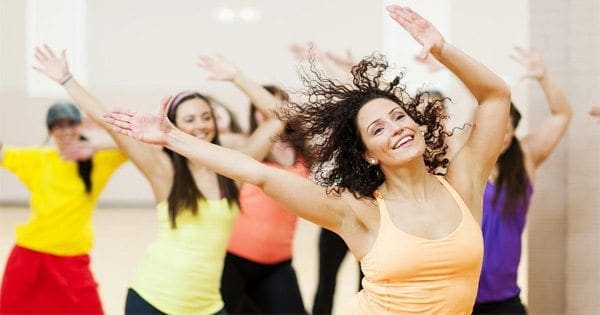
by Dr Alex Jimenez DC, APRN, FNP-BC, CFMP, IFMCP | Agility & Speed, Fitness, Health
Working out in the gym is great, but even the biggest treadmill loyalists can get bored on the moving belt. Our advice? Mix up your sweat sessions whenever you can. Introducing different types of movement into your fitness routine can actually help you get in shape faster because they challenge your muscles in new ways.
That�s why we love with this samba reggae dance workout. It�s a total change of pace from your standard barre class. And you don�t need to be a pro dancer to try the moves either.
Samba Workout
In the video, dance teacher Quenia�Ribeiro, of the�renowned dance school Ailey Extension demonstrates basic samba reggae moves that work up a solid sweat. Ready to get down and groove? Follow along for a heart-pumping, fat-blasting workout you�ll actually have fun doing.
RELATED: 12-Minute Dance Cardio Workout With Katie Austin�
- Samba reggae basic step: Standing with your feet slightly wider than hip-width, bounce from one foot to the other, moving your hips from side to side as you bounce.
- The snake: Adding on to the basic step, roll your upper body and arms in a snake-like movement to the right as you step to the right side. Clap as you return your torso to center, then repeat on the left.
- The shake: Standing with your feet slightly wider than hip-width, step your right leg out to the side as you sit into a squat and pop the hips forward and back. Continue to stay low as you repeat this movement on the other side, stepping out with the left leg. Stay loose in the hips as you alternate stepping out onto each leg.
- Cross-and-pull: From standing, step and cross the right leg over the left as you pull the right arm down in front of the body. Return to center and repeat on the left. Bounce from side to side as you alternate doing this cross-and-pull movement on the left and right.
- Window washers: Standing with your feet slightly wider than hip-width, shift your weight as you bounce your hips from one side to the other, holding your arms out to each side and moving them in quick circular movements, as if washing windows.

Call Today!

by Dr Alex Jimenez DC, APRN, FNP-BC, CFMP, IFMCP | Fitness
Trying to be a better runner? It’s not just about logging miles (although that certainly helps). The key to running strong and long also has a lot to do with shoring up your muscles, activating your core and back in addition to your lower body,�and keeping your movements fluid. To help do that, start incorporating these full-body strengthening�moves from Nike+ Run Club coach Julia Lucas to your routine three days a week, before or after a run. You’ll start noticing a difference in your strength in no time.
1. Planks
�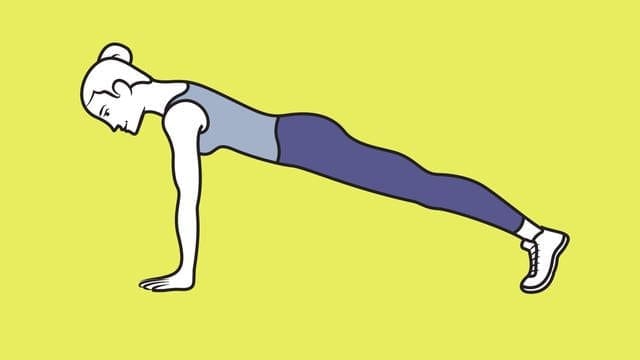
Planks have long been considered one of the best exercises for your core. In addition to your abs, this move engages your back, quads, and hamstrings, making it a great full-body exercise for runners. To do it, get into the �up� part of a push-up, with palms�on the floor directly under shoulders and legs extended behind you, forming a straight�line from head to heels. Hold for 10 to 30 seconds, keeping abs tight. Do�2 or 3 sets.
RELATED: 20 Ways to Do a Plank
2. Clamshells
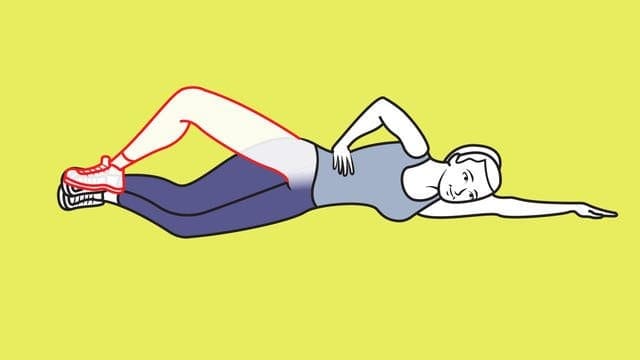
Clamshells work your hips and glutes, parts of the body that runners regularly need to activate. To do them, start out by lying�on your side with legs stacked and knees bent at 45 degrees. Rest head on arm; place top hand on hip. With inside edges of feet touching, lift top knee as high as you can without shifting hips or pelvis. Pause; lower knee. Do 2 or 3 sets of 10 reps per side.
3. Side squats
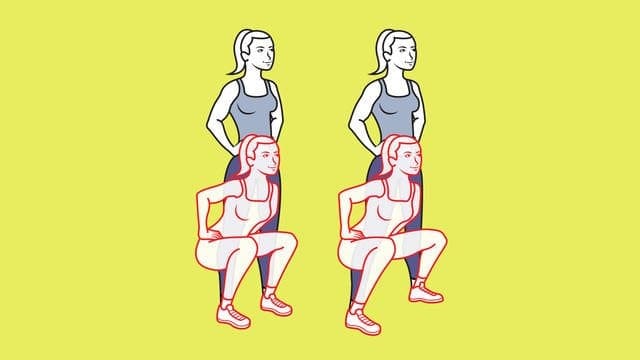
Side squats are a great way to strengthen your outer highs, hips, and glutes. To do, stand with feet hip-width apart, hands on hips; squat. Stand; move left foot a step out. Squat again; step left foot in as you rise. Continue, alternating sides. Do 2 or 3 sets of 10 to 12 reps per side.
Pin all of these moves for later:


by Dr Alex Jimenez DC, APRN, FNP-BC, CFMP, IFMCP | Health, Integrative Functional Wellness, Integrative Medicine, Nutrition, Wellness
Let’s face it, sometimes there’s nothing better at the end of a long day than a glass of wine. But sipping much more than that can wreak havoc with your shape, and not just by adding hundreds of calories to your diet. Alcohol temporarily keeps your body from burning fat, explains integrative medicine specialist Pamela M. Peeke, MD, author of The Hunger Fix. The reason is that your body can’t store calories from alcohol for later, the way it does with food calories. So when you drink, your metabolic system must stop what it’s doing (like, say, burning off calories from your last meal) to get rid of the booze.
“Drinking presses ‘pause’ on your metabolism, shoves away the other calories, and says, ‘Break me down first!'” Dr. Peeke explains. The result is that whatever you recently ate gets stored as fat.
What’s worse: “Research has uncovered that alcohol especially decreases fat burn in the belly,” Dr. Peeke adds. “That’s why you never hear about ‘beer hips,’ you hear about a ‘beer belly.'”
So can a girl ever enjoy a drink without putting on pounds? Absolutely, if you imbibe the right way. In fact, large, long-term studies published in the Archives of Internal Medicine and International Journal of Obesity found that middle-aged and older women who drank moderately (about one drink a day) gained less weight over time than those who never imbibed at all; they were also less likely to become obese.
It’s a complex topic, but JoAnn Manson, MD, professor of medicine at Harvard Medical School and co-author of the studies, says that the moderate drinkers appeared to be more likely to compensate for the occasional drinks by taking in fewer calories from other sources and also tended to be a little more physically active. (In other words, they didn’t get blitzed on margaritas, then dive in to a bowl of fried ice cream.) What else beyond basic exercise and calorie-counting can keep happy hour from turning into hefty hour? Health dug into the research and grilled the experts on how you can have your sips and jeans that still zip.
Rule #1: Always eat when you drink
While the Harvard research suggests it’s wise to factor in those cocktail calories, it’s actually more important to eat right than to eat less, the experts stress. Skimping on food in order to “make room” for drinks will only backfire and send you straight to the bottom of the candied nut bowl. Here’s why: Most cocktails are loaded with simple carbohydrates, “so during a night of drinking, people end up with soaring blood sugar, followed by a ‘crash’ that leaves them ravenous,” says Jason Burke, MD, an anesthesiologist and hangover researcher who runs a hangover treatment clinic in (where else?) Las Vegas.
You can help counteract that effect by nibbling foods that provide long-lasting energy. “Before you go out, have dinner or a snack with protein, fiber, and healthy fat,” says Karlene Karst, RD, author of The Full-Fat Solution. “They stabilize your blood-sugar levels without slowing down your metabolism.” Karst recommends Greek yogurt with berries, almond or hemp butter with an apple, or a protein shake. An added benefit of grabbing a bite beforehand, she says, is that that Pinot or appletini will be absorbed more slowly into the bloodstream, minimizing its diet-damaging effects.
In addition to revving your appetite, tippling also makes you lose your eating inhibitions (“I only live once�I’ll have the steak frites!”). “It temporarily impairs the prefrontal cortex, the smarty-pants part of the brain that allows you to think clearly and rein in impulsivity,” Dr. Peeke says. “So after a certain amount of alcohol (and it’s different for everyone), you’re going to feel yourself not caring and letting it rip with food and probably drinks.” A cocktail (or three) can make you forgetful, too�as in, forgetting that the Death by Chocolate dessert is not on your eating plan.
The trick is to have an easy-to-follow strategy in place before you take that first sip. Scout out the bar or restaurant menu ahead of time and note your picks on your phone. Then set an alert to remind you to order wisely�that way you won’t have to think too much (or rely on that alcohol-impaired prefrontal cortex!) to stay on track.
As with your pre-partying meal, go for something with fiber, protein, and a little bit of healthy fat to help control blood-sugar levels and make you feel satisfied, Karst says.
Rule #2: Know that some drinks make you hungrier than others
When it comes to waist-friendly cocktails, the simpler the drink, the better. Not only do the sweet-and-fancy ones tend to have more calories, but the additional sugar can make you even hungrier: Your blood sugar skyrockets higher than it does on beer, wine, or a shot of something, making the plummet (and the resulting cravings) worse.
And then there are the calories! Booze has 7 calories per gram, making it the second-most calorie-dense macronutrient. (That’s just below pure fat, which has 9 calories per gram.) This means a measly 1.5-ounce jigger of vodka has almost 100 calories. Mix that up with some club soda and lime, and it’s a reasonable tipple, but when you start tossing together a whole bunch of different liquors�whether it’s a hipster fizz made with bourbon, elderflower liqueur, and house-made bitters, or a dive-bar Long Island iced tea loaded with vodka, rum, tequila, and gin�it really adds up (to the tune of 300 calories, in the case of a Long Island).
Even simple mixed drinks like rum-and-Cokes and screwdrivers pack extra calories because of the sugary soda and juice. “So if you’re going to drink, have something straight up and simple like wine or beer,” Dr. Peeke advises. Any wine or beer works, but to trim about 10 calories per glass, choose a ros� or white wine instead of a heavier red. A whole pint of a dark beer is around only 170 calories (compared with 195 for the same amount of regular beer) and may leave you feeling fuller than, say, Champagne, because it’s so starchy and rich, Karst notes. Vodka, gin, or bourbon with club soda and a twist are pretty good bets, too. Club soda is calorie- and sugar-free and dilutes the alcohol and its effect on your cravings. Avoid juices, liqueurs (which are sweet and syrupy), colas, tonics, and super-sugary bottled mixes like the ones for a lot of bar-made margaritas and daiquiris.
Rule #3: Stick to a drink or two, tops
One drink a day is the widely accepted definition of moderate drinking for women, but there’s a misconception among some bar-hoppers that you can go without alcohol all week and save your seven drinks for the weekend. “That’s the worst thing you can possibly do for your weight,” Dr. Peeke says. (And, of course, for your health.) “It has a much bigger effect than one drink a day.”
When you down three or four drinks in one night, your body has many hundreds of alcohol calories to process before it can continue to break down food calories or stored fat. Plus, all those drinks throw your blood sugar even more out of whack so you’re hungry as heck�and because you’re tipsy, your prefrontal cortex is misfiring and you now have zero compunction about ordering the fried mozzarella sticks with a side of ranch (and keeping them all for yourself). The extra calories alone are enough to pile on the pounds; have four drinks every Saturday night and you’ll be up about 10 pounds in a year.
Rule #4: Beware that gnawing, starving feeling the next day
The morning after poses a new diet challenge. As if a hangover weren’t punishment enough, you’re fighting cravings for large amounts of cheesy, greasy fast food. Part of the problem is that you’re dehydrated (don’t forget, alcohol is a diuretic), and that can make you feel even hungrier, Karst notes. But that’s not the only thing at play. “The body needs energy to resolve the effects of a big night of drinking, so it wants the richest source of energy it can find, which is fat,” Dr. Burke says. “Also, greasy foods tend to settle the stomach a bit.”
To avoid that: When you’re out, drink a big glass of water for every drink you have. Then, before going to bed, have some more, along with a snack that is high in fiber and protein such as high-fiber cereal or oatmeal, Dr. Burke suggests. “You’ll get important nutrients into the body that were lost during alcohol consumption,” he adds. “Plus, foods rich in fiber stay in the stomach longer, so you’ll be less prone to hunger in the morning.” With any luck, you’ll also be less likely to overdo it in the a.m., ensuring your figure won’t have to pay the price for a night out.

by Dr Alex Jimenez DC, APRN, FNP-BC, CFMP, IFMCP | Fitness, Health, Wellness
Add lean protein to every meal and snack
Weight-loss experts have always encouraged us to fill our plates with produce as a way to reap the benefits of its hunger-busting fiber, along with its antioxidants and other nutrients. But if you�ve been laser-focused on loading up on fruits and vegetables, your diet may need more lean protein. You should have a serving every few hours, says Brill. Nuts, eggs, and meat are more caloric than an apple or a pile of power greens�but the protein will keep you full longer and can lower your overall calorie intake for the day.
Moreover, a 2015 study published in The American Journal of Clinical Nutrition showed that incorporating protein into every meal and snack�starting with breakfast�helps control appetite and manage body weight. “A balanced diet that includes some protein helps fuel your muscles,” explains Brill. And as you already know, the more lean body mass you have, the higher your metabolic rate will be. Not to mention, your body has to work harder to digest protein, and through that process you burn even more calories.
RELATED: 13 High-Protein Breakfast Recipes and Ideas
Don�t protein-load. But do try making a more conscious effort to get small, regular doses: Eat eggs or almond butter in the a.m., for example. Make meat, fish, or legumes (like beans and peas) a key component of your lunch and dinner. And snack on hummus, nuts, kefir, or roasted chickpeas�all protein-packed picks to fuel your way to fit.

by Dr Alex Jimenez DC, APRN, FNP-BC, CFMP, IFMCP | Fitness, Health, Wellness
This article originally appeared on People.com.�
Erin is a self-proclaimed exercise addict.
The 39-year-old from San Diego, California reveals on Tuesday�s episode of�the syndicated daytime series The Doctors�that she builds her whole life around fitting in workout sessions.
�I exercise eight�hours a day,� she says in an exclusive clip. �I never get tired, I don�t get sore.�
Even Though Her Body Can Seemingly Handle Her Excessive Workouts
They do not make her feel good.
�I�ll cancel plans, I�ll cancel appointments. It�s been controlling my life,� she says. �I just can�t stop. It�s not giving me the rush that I used to feel just doing three to four hours.�
Erin says she squeezes in early morning workouts before work, and then returns to the gym when she is done for the day.
RELATED:�Why You Should Rethink Your Spinning Obsession
�Around 5 o�clock is when I work out, and then I go to work, and then I work out for another two hours,� she says.
But Erin also reveals she has been using exercise to avoid a painful trauma she experienced in the past.
�Eight months ago I got a message from a girl. It triggered a memory that I had suppressed for 30 years,� she says in the clip.
�Basically I�ve Been Adding On Exercise So I Can Just Forget.�
Host Dr. Travis Stork commends Erin for seeking the help she needs to fight her addiction.
�Before we get into where we need to go from here, we have to acknowledge where we are right now,� he says. �I�m so happy you realize that you need to change, because when I saw those blood pressure readings, there are things in medicine we call hypertensive urgency, and those blood pressure numbers [are] quite alarming.�
Gastroenterologist Dr. Jorge Rodriguez, who is working to treat Erin, says he was also alarmed by the results.
�In the six years that I�ve done the show with you, Erin is the most ill person, the sickest person that we�ve had on the show in my opinion,� he says.
To find out more of her test results and to see if�The Doctors can help Erin, check your local listings and tune into Tuesday�s episode.

Call Today!

by Dr Alex Jimenez DC, APRN, FNP-BC, CFMP, IFMCP | Fitness, Health, Wellness
Here�s to a different kind of body transformation. On Instagram yesterday, fitness influencer Anna Victoria shared a�follower�s photos that document her inspiring recovery from an extreme exercise habit.
In the “before” pic, @barbellkell_fbg is flexing her biceps in a bikini that shows off her chiseled six-pack.
What It Took To Get That Sculpted Bod Was Anything But Healthy

The photo on the left was taken a year and a half ago, when @barbellkell_fbg was committed to a 10-week plan that involved working out�five times a week, sometimes twice a day, and counting macros (down to chewing gum, vitamins, and cough drops), she explains in the caption. “[Z]ero balance, zero living, zero sustainability,” she wrote. “I had my full time job and this, which was another full time job basically.”
The strict dieting and intense workouts�took a serious toll. By the end of the plan, @barbellkell_fbg had a flat belly, and no trace of cellulite�but her energy levels had plummeted. “I could barely lift my feet to run on the treadmill,” she wrote. A blood test showed her white blood cell count was severely depressed. It was so low her doctor wanted to test her for cancer, she says.
After convincing him to do another blood test in a month, @barbellkell_fbg�committed to getting back to “normal.” She ate “to survive,” she said;�and in time, she gained fat and her white blood cell count recovered.
OD’ing on exercise�is a real thing, and it can�cause everything from fatigue to chronic achiness�even an elevated heart rate, which puts more demand on your ticker. “Overexercising�often contributes to pain,�dehydration, or electrolyte imbalances, all of which can lead to an increase in heart rate,” Kathryn Berlacher, MD, a cardiologist at the University of Pittsburgh School of Medicine, explained to�Health in a prior interview.
Signs That You’re Overdoing It At The Gym
And tips on how to scale back�check out our guide to the symptoms of overtraining.
As for�@barbellkell_fbg, she’s�come a long way in the last 18 months.�She now follows Anna Victoria�s Fit Body Guides, and eats what she wants in moderation. “I feel good. I am strong. I am happy,” she says�and�she loves the body she has now.

Call Today!






















